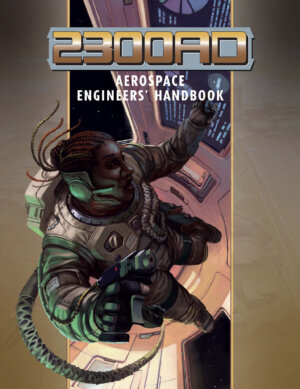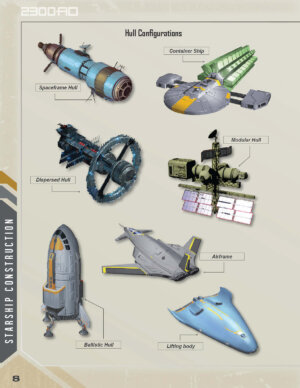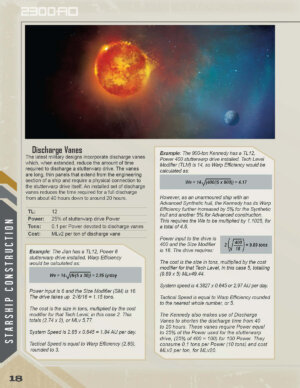
Publisher: Mongoose Publishing
Author: Colin Dunn
Illustrations: Quentin Soubrouillard, Colin Dunn, Andoni Fernandez, Alexey Rubakin, Mark Graham, Mike Doscher, Katrina Hepburn
Year: 2021
Genre: Science fiction roleplaying game supplement
Pages: 194 pages
MSRP: $49.99 for the hardcover (arriving in July 2022) or $29.99 for the PDF at DriveThruRPG
This book focuses on the ships and space stations of 2300AD. The highlight of this supplement is the ship design, but it contains enough other rules and information to be valuable for most groups. The layout and look is similar to previous 2300AD books. The art is sufficient with some pieces being superior to others. However, the art does not conjure pictures of giant space battles or desperation, but rather images for a technical readout.

Not every calculation is linear, which will require a group to iterate to optimize the power and size of things like a stutterwarp drive. Weapons, life support and screens are referenced after these steps in the advanced design options even though they are typically in a ship. Fortunately, the book provides two example craft so it can give some clarification. However, the example craft do not always follow tech levels within the design, which can cause a few issues.
There are some advanced options for design such as rules for slower propulsion systems like solar sails, ion drives, and plasma drives for generation style ships. Later in the book are rules for the much smaller vehicle 
The rules for space stations are similar, but at a much larger scale. Space stations will vary from modular like the International Space Station, ring stations to those made out of a hollowed out asteroid exceeding 5 billion tons.
The book contains several examples of drones and ships ranging from dropships and interface craft to missile carriers. Every ship has detailed maps of the interior. The appendices include rules for designing drones and alien ships for the Sung, Pentapods and Kaefers. The ship designs for each race are given unique options with many being exclusive to their respective race.
Some sections and rules could have been better organized as there are various small sections of one or two pages that are spread out in the book. These contain details about different cultures such as the belters and libertines, new rules for advanced spacecraft combat, and asteroid operations. The book expands the lore of the world by including military forces of various nations. Finally, a new career, Spaceborne, is added to the book which replaces the Drifter career from the corebook.

















